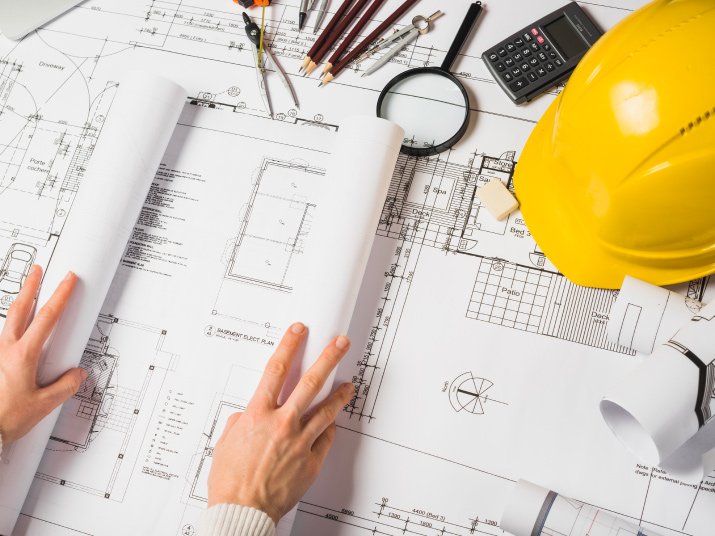Acoustics are pivotal for modern living, yet often overlooked. From the noise of city streets to open offices, acoustic studies help capture and quantify sound to improve our quality of life.
This begs the question: why is an acoustic study crucial for any building?
With an impending need for improved acoustics in all kinds of spaces, it’s time to take a closer look at what makes acoustic studies so important.
What is an Acoustic Study?
The measuring and evaluation of sound inside a structure or building constitute an acoustic study.
An acoustic analysis aims to comprehend how sound behaves within a structure and to spot any possible problems that can compromise the inhabitants’ safety and comfort. The research examines various elements, including sound transmission, vibration, and noise levels.
The 3 primary types of acoustic research methodologies are:
1. Computer modeling: The objective of computer modeling, which often incorporates numerical simulations of acoustic situations, is to find possible problems that can compromise occupant safety and comfort.
2. Field investigations: These are usually conducted using less sophisticated tools like microphone arrays and sound level meters.
3. Laboratory study: In a controlled setting, noise levels are often measured for laboratory experiments using a sound level meter.
Noise measurement or noise-measurement technology are terms often used to describe the use of noise measurements in acoustics.
In an acoustic study, sound-level meters measure the amount of noise within a building or structure. Consequently, studying acoustics requires a precise and dependable noise-measurement system, particularly given the enormous variation in acoustic circumstances.
The Steps Involved in an Acoustic Study
An acoustic study typically has the following steps:
1. Initial Assessment
An initial assessment is a critical first step in any acoustic study. It involves a detailed review of the building’s plans, drawings, and specifications to identify potential sources of sound transmission and potential areas for improvement.
By conducting an initial assessment, acoustic engineers can create an effective plan to reduce noise and improve the acoustics of any space.
2. Measurement and Analysis
Sound measurement and analysis are essential to understanding how sound behaves within a building. Through a series of measurements and analyses, it is possible to gain insight into the acoustic environment of a space. This information makes designing solutions that improve the sound quality within the building easier.
Specialized equipment for these measurements and analyses can fetch accurate data, which is leveraged to develop effective solutions for any acoustic challenges the space faces.
3. Recommendations
Acoustic consultancy is necessary for designing and constructing a building. This is because it’s important to ensure that the sound environment of a building meets the needs of occupants, visitors, and those working in the area.
Acoustic consultants measure and analyze sound behavior in buildings. Consequently, they can provide recommendations for improving it. These recommendations can include changes to insulation, materials used, and design features.
Furthermore, consultants can advise how best to create an environment that meets the needs of all involved.
4. Implementation
This final step can either be done through the design and construction process or post-construction modifications. Either way, it’s essential to ensure that the right solutions are chosen to achieve the desired acoustic goals.
Why is an Acoustic Study Important for Building Design and Construction?

Acoustic analysis is crucial for building design and construction because it ensures that the structure is designed to provide its inhabitants with a pleasant, secure, and serene environment.
Excessive noise levels, vibration, and poor sound transmission are just a few problems that may arise from a building’s poor design and harm inhabitants’ well-being, safety, and comfort.
4 Key Benefits of Conducting an Acoustic Study
There are many benefits to conducting an acoustic study, including the following:
1. Improved Comfort
Acoustic studies can help to identify areas in a building that are too noisy, providing the necessary data to create a more comfortable environment for occupants.
By understanding the acoustic properties of a space and determining the appropriate sound absorption and noise cancellation techniques, acoustic studies can provide recommendations for reducing noise levels and improving overall comfort. These recommendations can reduce stress levels for occupants, improve concentration, and create an environment conducive to productivity.
2. Enhanced Safety
Fire safety is a primary concern for building occupants, and acoustic studies can play an essential role in ensuring the safety of those within.
Through acoustic research, we can identify areas of a building where sound transmission is poor, which could put occupants at risk if they cannot be warned quickly in the event of a fire or other emergency. Using acoustic studies to pinpoint these areas and make improvements accordingly, we can ensure that all building residents are safe and secure.
3. Better Functionality
Acoustic studies are becoming increasingly important in identifying building issues that can impact the structure’s functionality and cause discomfort for those inside. These studies measure the vibrations in specific building areas, allowing for improved soundproofing and insulation and better air quality and temperature control.
Thus, acoustic studies can help to identify areas where vibration levels are too high, allowing for better functioning spaces.
4. Cost Savings
An acoustic study conducted early in the design process can help identify potential issues and prevent costly retrofits or renovations. By proactively integrating soundproofing into the initial design, architects, designers, and engineers can create an acoustically efficient and cost-effective space.
Final Note
Acoustic studies are essential for reducing noise pollution, improving communication quality, and ultimately creating a comfortable environment for occupants to work and live in.
By conducting an acoustic study, building owners and designers can identify potential issues with noise levels, vibration, and sound transmission and take steps to improve the sound behavior of the building.
Mechartés is proud to offer its customers the best in class acoustic modeling and consultation services. Our experienced engineers are ready to assist you with all your acoustic needs. We understand that conducting acoustic modeling can be complex, but we are here to make it easier for you.
Mechartés has a varied portfolio with more than 5000 completed projects and a presence on five continents. Our engineers have years of experience in the field and are up-to-date with the latest technologies and trends. We believe in delivering quality results that exceed our customers’ expectations.
Talk to one of our top experts today!


 Share
Share  facebook
facebook